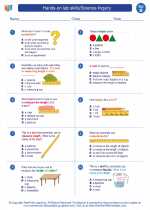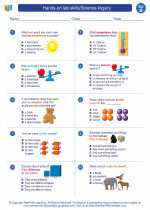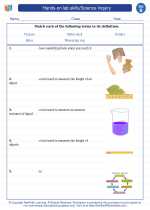Plants
Plants are living organisms that belong to the kingdom Plantae. They are essential for life on Earth as they provide oxygen, food, and habitat for other organisms. Plants come in a variety of shapes, sizes, and colors, and they can be found in almost every environment on the planet.
Basic Structure of Plants
Plants have several key structures that enable them to carry out essential life processes:
- Roots: Roots anchor the plant in the soil and absorb water and nutrients from the ground.
- Stems: Stems provide support for the plant and transport water, nutrients, and sugars throughout the plant.
- Leaves: Leaves are the primary sites of photosynthesis, where plants produce food using sunlight, water, and carbon dioxide.
- Flowers: Flowers are reproductive structures that produce seeds for the next generation of plants.
Life Cycle of Plants
Most plants go through a life cycle that includes several stages:
- Seed Germination: The life cycle begins with the germination of a seed, where it sprouts and begins to grow into a seedling.
- Maturation: The seedling grows into a mature plant, producing flowers and seeds for reproduction.
- Reproduction: Pollination and fertilization of flowers lead to the production of seeds, which can then grow into new plants.
Types of Plants
Plants can be classified into several major groups based on their characteristics:
- Flowering Plants (Angiosperms): These plants produce flowers and seeds enclosed in fruits. They are the most diverse group of plants and include trees, shrubs, and grasses.
- Non-Flowering Plants (Gymnosperms and Ferns): These plants produce seeds that are not enclosed in fruits. They include conifers, cycads, and ferns.
- Non-Vascular Plants (Bryophytes): These small, non-woody plants lack vascular tissues for transporting water and nutrients. Mosses and liverworts are examples of bryophytes.
- Seedless Vascular Plants: These plants have vascular tissues but do not produce seeds. They reproduce using spores and include plants like horsetails and clubmosses.
Importance of Plants
Plants play a crucial role in the ecosystem and have significant importance for humans:
- Oxygen Production: Plants release oxygen during photosynthesis, which is essential for the survival of most living organisms.
- Food Source: Many plants provide fruits, vegetables, grains, and nuts that serve as a primary food source for humans and animals.
- Ecosystem Support: Plants provide habitats for various organisms and help maintain the balance of ecosystems.
- Medicinal Uses: Several plant species are used in traditional and modern medicine for their therapeutic properties.
Study Guide
Here are some key concepts to focus on when studying plants:
- Identify and describe the main parts of a plant and their functions.
- Understand the process of photosynthesis and its importance for plant survival.
- Explain the life cycle of a plant, including seed germination, growth, and reproduction.
- Compare and contrast different types of plants, including flowering and non-flowering plants.
- Discuss the ecological and human importance of plants in the environment.
Understanding the diverse world of plants is essential for appreciating the natural world and the vital role that plants play in sustaining life on Earth.
[Plants] Related Worksheets and Study Guides:
.◂Science Worksheets and Study Guides Second Grade. Hands-on lab skills/Science Inquiry

 Worksheet/Answer key
Worksheet/Answer key
 Worksheet/Answer key
Worksheet/Answer key
 Worksheet/Answer key
Worksheet/Answer key
 Vocabulary/Answer key
Vocabulary/Answer key
